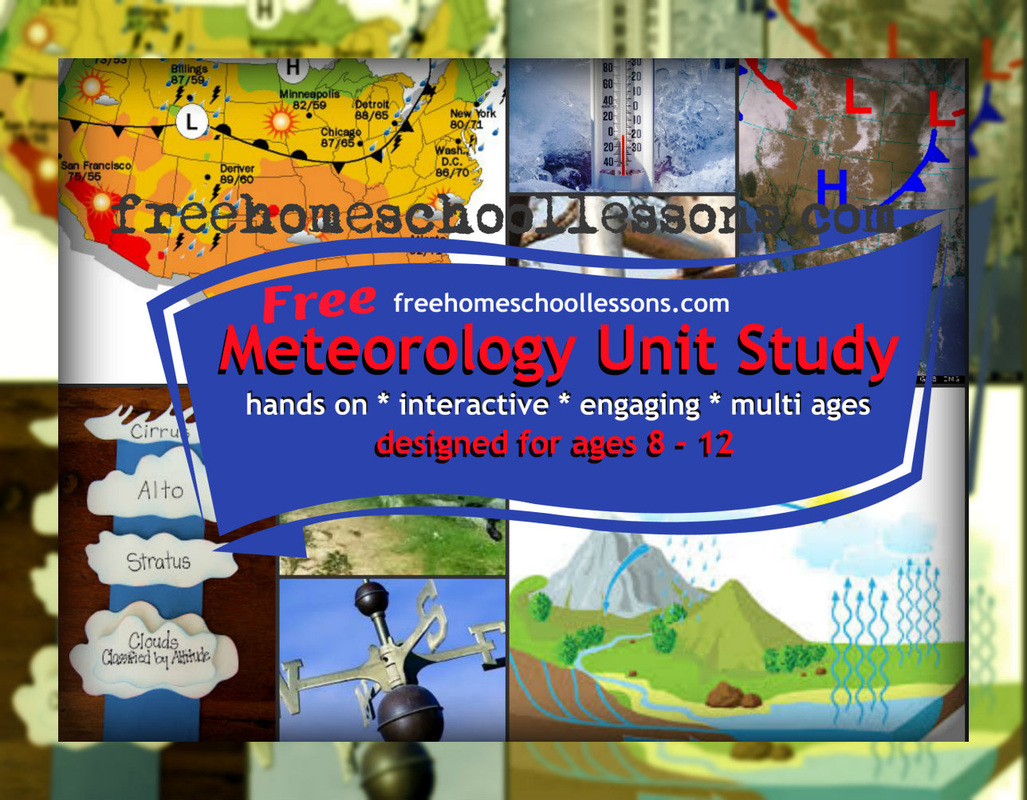I use a basic classroom science text as the base of all my unit studies. This year I am using an OLD 2002/2005 Glencoe Science book called the Air Around You. Its pre-common core and is used for grades 6th and up. I found it for $4 at Abebooks.com but there are free online copies available. (search google Air Around You pdf). This isn't a dry textbook and chapter review unit study. I have provided links to interactive note booking, you tube videos, computer animations, simulations and computer interactive. In addition I have provided art lessons that we used during various parts of our science study. I meet the challenge of teaching concepts to a variety of learning styles and ages using plenty of interactive resources.
TOPICS of DISCUSSION
Atmosphere Unit Study (2 - 3 weekly lessons)
Weather (3 weekly lessons onweather patterns and forecasts)
Climate (biomes) (1 weekly lesson - we did Biomes last year through our Geography Unit study)
more coming in Earth Science
The Water Planet (FEB/MARCH 2015)
Water Cycle
Freshwater at Earth's Surface (streams, lakes, reservoirs, wetlands)
Groundwater Resources
Ocean Motion (Ocean water, currents, waves and tides)
Oceanography
Weather (3 weekly lessons onweather patterns and forecasts)
Climate (biomes) (1 weekly lesson - we did Biomes last year through our Geography Unit study)
more coming in Earth Science
The Water Planet (FEB/MARCH 2015)
Water Cycle
Freshwater at Earth's Surface (streams, lakes, reservoirs, wetlands)
Groundwater Resources
Ocean Motion (Ocean water, currents, waves and tides)
Oceanography
TEACHER RESOURCES
Classroom unit studies from science institutes and universities
NASA Meteorology unit study
*I haven't used this just thought it was a good resource for further exploration
- Introduction and Chapter 1, +pdf
- Chapter 2: Weather and Climate, +pdf
- Chapter 3: Surface Color and Effect of Temperature Change, +pdf
- Chapter 4: Angle of Light Rays and Surface Distribution, +pdf
- Chapter 5: Barometer Basics, +pdf
- Chapter 6: Constructing a Barometer, pdf
- Chapter 7: Does Air Have Weight?, +pdf
- Chapter 8: Can You Show That the Temperature of Air Has an Effect on Its Weight and Its Direction of Vertical Movement?, +pdf
- Chapter 9: Are Cold Liquids More Dense Than Warm Liquids?, +pdf
- Chapter 10: Does Air Contain Water Vapor?, +pdf
- Chapter 11: A Sling Psychrometer and Relative Humidity, +pdf
- Chapter 12: How Clouds Form —Understanding the Basic Principles of Precipitation, +pdf
- Chapter 13: Tornado in a Box, +pdf
- Chapter 14: Design Challenge: What Factors Determine the Comfort Level of Air?, +pdf
- Chapter 15: Bringing More Meaning to Weather Predicting: the Weather Station and “Reading” the Sky Help Put It All Together, +pdf
- Chapter 16: Predicting Weather by Connecting the Basic Cloud Types With Information Collected from the Weather Station, +pdf
- Appendices, +pdf
- About the Authors , +pdf
National Center for Atmospheric Research
Our Science Unit Studies
SCIENCE UNIT STUDIES we have so much fun with hands on that we are still building these pages!

ASTRONOMY 14 week unit study
ANATOMY (Human Body)
ECOLOGY (Habitats)
ANATOMY (Human Body)
ECOLOGY (Habitats)

